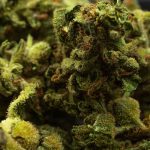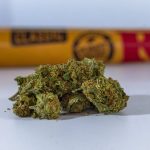Prague, the capital city of the Czech Republic, has a rich and vibrant art scene that has been influenced by various factors, including drugs. The city’s history, culture, and geography have all contributed to its unique artistic landscape. In this article, we will explore the impact of drugs on Prague’s art scene, from the early 20th century to the present day.
Early 20th Century: The Roots of Surrealism
In the early 20th century, Prague was a hub for surrealist artists, who were drawn to the city’s mystical and dreamlike atmosphere. Artists such as František Kupka and Toyen experimented with psychedelic substances, including opium and hashish, to tap into their subconscious minds and create innovative and avant-garde works of art.
The 1960s and 1970s: The Underground Movement
During the 1960s and 1970s, Prague’s art scene was characterized by an underground movement that sought to challenge the communist regime’s strict censorship and ideological control. Artists such as Jan Švankmajer and Emil Filla used drugs, including LSD and marijuana, to fuel their creative expression and push the boundaries of what was considered acceptable in the eyes of the authorities.
Modern-Day Prague: A Thriving Art Scene
Today, Prague’s art scene is more vibrant than ever, with a wide range of galleries, museums, and festivals showcasing the work of local and international artists. While the use of drugs is not as widespread as it was during the 1960s and 1970s, many artists continue to experiment with psychoactive substances to stimulate their creativity and explore new forms of artistic expression.
Some notable artists who have been influenced by drugs include Daniel Richter, who has spoken about the role of LSD in his creative process, and Hynek Martinec, who has used opium and other substances to create intricate and detailed paintings.
- František Kupka: A Czech surrealist artist who experimented with psychedelic substances.
- Jan Švankmajer: A Czech filmmaker and artist who used drugs to fuel his creative expression.
- Daniel Richter: A Czech-German artist who has spoken about the role of LSD in his creative process.
The Impact of Drugs on Artistic Expression
Drugs have been used by artists in Prague to stimulate their creativity, explore new forms of artistic expression, and push the boundaries of what is considered acceptable. LSD, in particular, has been used by many artists to access new levels of consciousness and tap into their subconscious minds. This has led to the creation of innovative and avant-garde works of art that reflect the artist’s inner experiences and emotions.
The Relationship Between Drugs and Inspiration
The use of drugs by artists in Prague has also raised questions about the relationship between drugs and inspiration. While some artists believe that drugs can stimulate their creativity and inspire new ideas, others argue that they can also lead to stagnation and creative blockages. Jan Švankmajer, for example, has spoken about the importance of finding a balance between the use of drugs and the creative process, arguing that too much reliance on substances can lead to a loss of control and a lack of focus.
Despite the potential risks, many artists in Prague continue to experiment with drugs as a way of accessing new sources of inspiration and creativity. Hynek Martinec, for example, has used opium and other substances to create intricate and detailed paintings that reflect his inner world and emotions. His work is characterized by a sense of intensity and passion, and is highly regarded by critics and collectors;
The Role of Coffee Shops and Underground Venues
Coffee shops and underground venues have also played a significant role in Prague’s art scene, providing a space for artists to gather, share ideas, and showcase their work. Many of these venues have a relaxed and bohemian atmosphere, where artists can feel free to express themselves and experiment with new forms of artistic expression. U Medvídků, for example, is a popular coffee shop that has been a hub for artists and intellectuals for decades, and has hosted numerous exhibitions and events showcasing the work of local and international artists.
In addition to coffee shops and underground venues, Prague is also home to a number of art festivals and events that celebrate the city’s vibrant art scene. The Prague Biennale, for example, is a major international art festival that takes place every two years, showcasing the work of artists from around the world. The festival features a wide range of exhibitions, performances, and events, and provides a platform for artists to showcase their work and connect with other artists and curators.
- U Medvídků: A popular coffee shop that has been a hub for artists and intellectuals for decades.
- Prague Biennale: A major international art festival that takes place every two years, showcasing the work of artists from around the world.
- Hynek Martinec: A Czech artist who has used opium and other substances to create intricate and detailed paintings.







The inclusion of contemporary artists such as Daniel Richter and Hynek Martinec adds a fresh perspective to the article. Their experiences with psychoactive substances demonstrate the ongoing influence of drugs on Prague\
I was impressed by the author\
I found this article to be fascinating and informative. The connection between drugs and art in Prague is intriguing and sheds new light on the city\
As an art enthusiast, I appreciated the insight into the lives and works of artists such as František Kupka and Jan Švankmajer. Their use of psychedelic substances is a fascinating aspect of their creative process.
The article highlights the significant role that drugs have played in shaping Prague\
The article provides a comprehensive overview of the impact of drugs on Prague\
Overall, I found the article to be engaging and well-researched. The author\